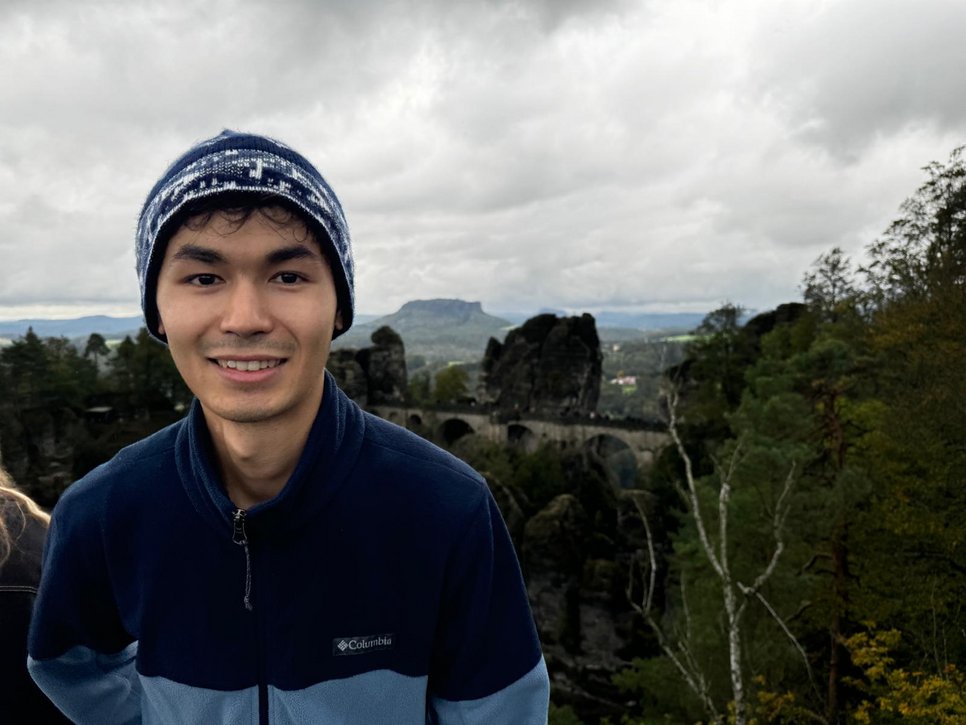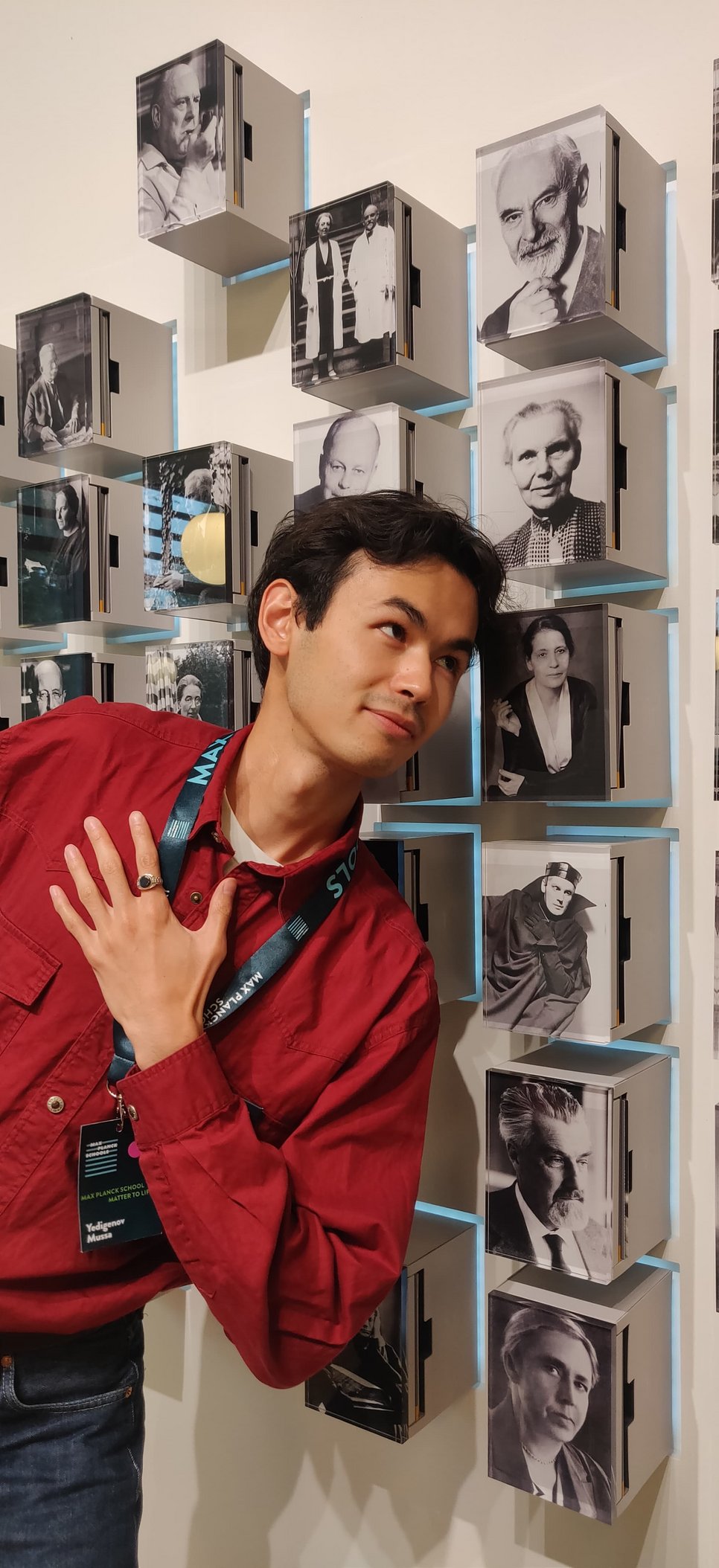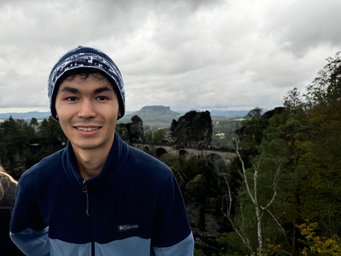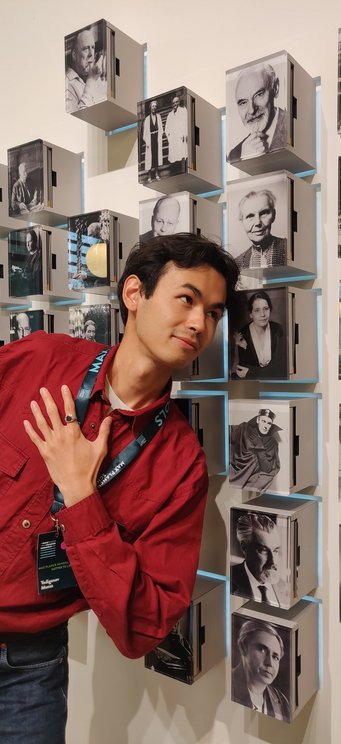“It fundamentally changed the way I look at living systems”
Switches and Signals: A Chemist’s Journey into Cell Biology
Mussa completed his practical training on “Signalling Dynamics in Tissue Repair” with MtL Fellow Philippe Bastiaens at MPI of Molecular Physiology
What made you chose this particular group and/or project?

I worked in the group of Philippe Bastiaens in the Department of Systemic Cell Biology at the MPI for Molecular Physiology in Dortmund. I first met Philippe in the MtL Fall Days 2022 in Aachen when I just joined the Matter to Life Community. While I was aware that he worked on cell signaling, a topic that I was very interested in back then, I was struck by his strong character and passion for science during the event. At first I really liked the questions he asked to speakers, they were often on-point and objective; I felt like we shared a belief in scientific rigor however harsh and challenging it might be. After some conversations during the coffee breaks and later via online calls, I was determined to work under Philippe’s supervision: he devoted himself to train the future generation of scientists, defended equal treatment in academic environment and despised ego.
The group had a great expertise in studying how cells sense and respond to growth factors, potent soluble proteins involved in cell fate specification and homeostasis via paracrine signaling, such as epidermal growth factor (EGF). This ligand is sensed by a receptor tyrosine kinase EGFR at the plasma membrane which can activate itself via phosphorylation in an EGF-dependent autocatalytic manner. The dynamics of EGFR activation, and hence the dynamics of signal transduction to downstream effectors such as ERK and Akt kinases, dictates the type of cellular response to the stimulus such as whether to divide or to migrate.
What was the aim of your project?
My work followed up on the recent discovery in the group that a specific cellular response is orchestrated at the molecular level by a toggle switch dynamics between a kinase-phosphatase pair EGFR-RPTPγ at the plasma membrane which indirectly or directly inhibit each other’s activity. This confers bistability to the system which activates a migratory or proliferation response at low or high physiological EGF levels, respectively. We hypothesized that different downstream dynamics through the same signaling network but with intact and perturbed toggle switch can explain different cellular migratory behaviors of respective cells. In other words, we thought that with “broken” toggle switch at the plasma membrane the cells will have altered “perception” of their immediate biochemical environment (EGF levels) and thus will exhibit a different cellular behavior compared to wild-type (WT) counterparts.
In this regard, I recorded the activity of the ERK kinase, which is downstream of EGFR and is a potent player in cell signaling, using live imaging of cells with a FRET sensor inside to see how the signaling dynamics is different between WT and RPTPγ knock out cells in confluent cell monolayers and in a “wound healing” model of collective cell migration. We observed subtle differences in the time series of ERK activity from single cells in these contexts using methods from nonlinear time series analysis. These were pronounced in the conditions of confluent cellular monolayers where cells with broken toggle switch were more in a migratory state without explicit cues as in a model of wound healing, consisted with the finding that RPTPγ is a suppressor of promigratory signaling. While follow up work is necessary for more solid results, I think its interesting in a broader context of chromosomal deletion of RPTPγ gene in some cancers and transition to migratory behavior of proliferating tumor cells in metastasis.

What did you enjoy the most during your lab rotation?
I have a degree in Chemistry and before joining Philippe’s group the closest I came to hands-on experience with living systems was working with bacteria to express and purify proteins for further in vitro studies. Hence everything I did during my lab rotation in cell biology was new for me: working with eukaryotic cells, using a widefield microscope, doing live imaging of cells over hours, using ImageJ for biological image analysis, tracking single cells and learning how to analyze time series… you name it! t was both challenging and very exciting. Fortunately, I had a great support from Philippe and wonderful members of the group who made it a fun journey where I never felt alone.
Looking back, I realized it was a true privilege to be part of such an environment specifically as a Master intern where I felt equal in conversations and had lots of input from many members of the group who were enthusiastic and up for spontaneous chats about the details of my or their projects or about general ideas and curiosities that make us excited about science.
What was your most important take away from this experience?
I was also very lucky to have Philippe as my direct supervisor who, while being an MPI director, spent up to 3-4 hours almost every day to chat with me, stare at the imaging movies together, explain the theory behind various microscopy techniques and to wonder together about various phenomena in nature and biology, scientific method and, of course, “What is Life?”. I remember we would watch the same imaging videos again and again and recursively move between the results of the analysis and the raw data; he called it “training my eye” to see the relevant pattern in an otherwise extremely rich data full of all kinds of information. He, of course, could always spot something interesting in the data way before me.
What was the biggest challenge?
In the transition to biology, my biggest challenge was to turn down the voice of my inner chemist. While I believe that an interdisciplinary team and a fresh view on a particular problem are beneficial for science, I felt that my chemical reasoning interfered with learning and following the logic of the (common) approaches to biological problems. This, of course, takes a lot of time and effort, but I strongly believe that easily switching between the languages of different scientific disciplines is the greatest skill an interdisciplinary scientist could have.
How do you see your experience influencing your future research path?
Just the six months of being in the group of Philippe fundamentally changed the way I look at living systems and heavily influenced my scientific reasoning. Hours of discussions from two years ago seeded ideas that developed into lifelong questions I am constantly thinking about or pursuing now as a PhD student and shaped my views, principles and values in academic and everyday life.

